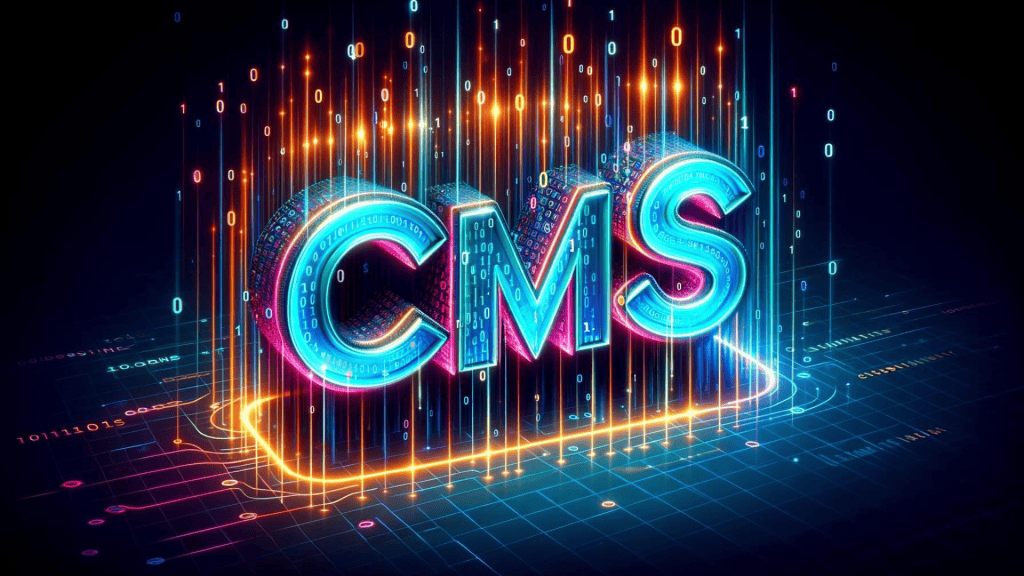Mastering Multimedia: Effective Strategies For Managing Content In CMS
Reading time: 7 minutes
Table of Contents
- Why Multimedia CMS Management Matters
- Essential Strategies for Effective CMS Multimedia Management
- 1. Optimize Media for Speed and Performance
- 2. Implement a Robust Tagging and Metadata System
- 3. Utilize Cloud Storage for Efficient Media Management
- 4. Prioritize Accessibility for Multimedia Content
- 5. Regularly Update Multimedia Content
- Benefits of Using the Best Content Management System for Multimedia
- 1. Streamlined Workflows
- 2. Enhanced SEO with Metadata
- 3. Scalability and Flexibility
- Best Practices for Multimedia CMS Management on HubSpot
- 1. Use Advanced Media Management Features
- 2. Leverage Content Analytics
- 3. Regular Content Audits
- Final Thoughts
Managing multimedia content within a content management system (CMS) is increasingly critical as digital landscapes evolve to prioritize visual engagement and interactivity. The right CMS solutions for multimedia, like HubSpot, can offer a robust content platform that streamlines managing, optimizing, and updating media content across diverse digital touchpoints. In this guide, we’ll cover effective strategies to enhance your CMS management and make the most of multimedia capabilities within your content platform.
Why Multimedia CMS Management Matters
Digital audiences expect fast-loading, visually engaging, and interactive websites that adapt to diverse media formats. Multimedia CMS management is crucial for creating a captivating user experience that aligns with these expectations. When correctly implemented, multimedia CMS solutions not only improve user engagement but also boost SEO, accessibility, and overall content appeal. Platforms like HubSpot provide powerful CMS solutions, optimizing both multimedia management and content presentation.
Essential Strategies for Effective CMS Multimedia Management
Using a multimedia-friendly CMS like HubSpot, often considered one of the best content management systems, enables streamlined management of diverse media. Let’s dive into some essential strategies that can enhance your CMS management for multimedia.
1. Optimize Media for Speed and Performance
Image Suggestion: Insert an image illustrating media compression tools or a loading bar.
One of the most critical aspects of multimedia management within a content platform is ensuring that media files load quickly. Fast-loading media keeps users engaged and positively impacts SEO rankings. Larger files, such as high-resolution images and videos, can slow your site’s speed, leading to higher bounce rates.
To combat this, compress images and videos without sacrificing quality. Many CMS solutions, including HubSpot, provide automatic image resizing and video compression tools to help maintain optimal loading times. By enabling these features, you can minimize manual efforts while enhancing your site’s performance.
Choosing the Right File Format
Selecting efficient file formats is another step in optimizing media. For images, consider using formats like WebP or JPEG 2000, which offer high-quality visuals with smaller file sizes. For videos, formats like MP4 or WebM are preferable as they maintain quality without excessive file weight. Incorporating these formats ensures that your CMS solution aligns with speed-optimized media management.
2. Implement a Robust Tagging and Metadata System
Image Suggestion: Place an image showing a tagging or metadata interface within a CMS.
A detailed tagging and metadata system can simplify your CMS management process, making it easy to locate, organize, and retrieve specific multimedia assets. Tags should be relevant, specific, and standardized across all media types to ensure a smooth and organized content workflow.
With a best content management system like HubSpot, you can easily assign tags to media files, helping you categorize content based on project, type, or audience relevance. This organization reduces the time spent searching for specific media and minimizes duplication, making content updates more manageable.
Tagging for Improved SEO
Adding metadata and descriptive tags also improves SEO performance. Tags, titles, and descriptions offer search engines valuable information, enabling them to accurately categorize your content. For even better results, explore these content creation tools and tips for effective digital marketing to complement your CMS multimedia strategy.
3. Utilize Cloud Storage for Efficient Media Management
Image Suggestion: Include an image of cloud storage icons or a CMS with cloud integration.
Multimedia files, especially video, can quickly consume server resources. Using cloud storage solutions integrated with your CMS can provide better performance, scalability, and accessibility. Cloud-based storage, such as HubSpot’s integration with third-party storage solutions, ensures that your content loads quickly, even for global users.
Cloud storage also allows you to organize media files in a centralized location, minimizing storage needs on your primary server and offering backup options for greater content security. This approach not only enhances your multimedia CMS but also offers a flexible and scalable solution for content-heavy sites.
Benefits of Cloud Storage for Global Reach
Cloud storage improves content delivery speeds by caching media files close to the user’s location, enabling faster load times. Many of the best content management systems include cloud integration to improve both user experience and site performance. Using a CMS solution with cloud options supports smooth and efficient multimedia management, even on content-intensive sites. Just as performance is critical, it’s also important to secure your content using CMS security best practices to protect sensitive media and prevent data breaches.
4. Prioritize Accessibility for Multimedia Content
Image Suggestion: Insert an image showing an accessibility checklist or examples of alt text and captions.
Making multimedia content accessible is essential to creating an inclusive user experience. Accessibility compliance expands your audience by making content usable for individuals with disabilities, meeting both ethical and legal standards.
When uploading images, add descriptive alt text that provides context for screen readers. For video content, include captions and transcripts to cater to hearing-impaired users. Additionally, ensure interactive elements are navigable with keyboard-only controls. Platforms like HubSpot provide accessibility options within their CMS, making it simpler to adhere to accessibility best practices.
Alt Text and Descriptions for Image Accessibility
Detailed alt text improves user experience and enhances SEO. Descriptive alt text allows visually impaired users to understand image content through screen readers, while also providing search engines with context about the image’s relevance. Adding this layer of information can elevate your multimedia CMS management, catering to a broader audience and increasing visibility.
5. Regularly Update Multimedia Content
Image Suggestion: Add an image of a calendar or scheduling interface for content updates.
Multimedia content, like all digital assets, should be reviewed periodically to ensure it aligns with your brand’s current style, messaging, and industry trends. Outdated media can make your site look unprofessional or inconsistent, potentially harming user trust and engagement.
Establishing a schedule to review multimedia assets—whether monthly, quarterly, or annually—ensures that content remains fresh and relevant. This practice also allows you to update branding elements or remove content that may no longer resonate with your audience.
Tracking Content Performance
Use CMS analytics to track engagement metrics for your multimedia content. Platforms like HubSpot allow you to monitor how users interact with specific media elements, enabling you to make data-driven decisions. By tracking performance, you can identify high-performing content, replicate its success, and enhance your overall multimedia strategy.
Benefits of Using the Best Content Management System for Multimedia
Choosing the best content management system tailored to multimedia, such as HubSpot, offers considerable benefits for content-heavy sites. An effective CMS solution streamlines media organization, facilitates faster loading, and provides tools for accessibility and analytics. Here’s how a multimedia CMS solution can elevate your content platform:
1. Streamlined Workflows
By automating certain aspects of media management, like compression and cloud storage, the right CMS solutions allow you to focus on content strategy rather than technical upkeep. HubSpot’s CMS, for example, integrates these functionalities, reducing time spent on manual processes.
2. Enhanced SEO with Metadata
CMS platforms that support metadata tagging improve multimedia discoverability by search engines. With a content platform like HubSpot, multimedia files are optimized with metadata options, enhancing SEO and ensuring your content is readily accessible to users and search engines alike.
3. Scalability and Flexibility
Effective CMS solutions for multimedia provide scalable storage options and integrations with cloud providers. As your content needs grow, these CMS features allow your platform to evolve without compromising performance.
Best Practices for Multimedia CMS Management on HubSpot
Using HubSpot as your multimedia CMS platform enables you to leverage advanced tools for a seamless content experience. Here are some best practices for making the most of your HubSpot CMS:
1. Use Advanced Media Management Features
HubSpot offers advanced image resizing, video compression, and metadata tagging. These tools ensure your multimedia content is optimized from the start, improving both loading times and SEO.
2. Leverage Content Analytics
HubSpot’s content analytics enable you to track how users interact with your multimedia content, providing insights into what works best. Use these metrics to refine your content strategy and focus on high-impact areas.
3. Regular Content Audits
Conducting periodic content audits helps maintain relevance and quality across your media. HubSpot’s scheduling and organization features make audits efficient, ensuring that you keep multimedia content up-to-date.
Final Thoughts
Image Suggestion: Use an image depicting a well-organized media library or CMS dashboard.
Mastering multimedia content management in your CMS is essential for creating an engaging and visually appealing user experience. By implementing these effective strategies—such as optimizing media, tagging for organization, using cloud storage, prioritizing accessibility, and updating content regularly—you can enhance your digital presence and maximize the impact of your CMS management efforts.
Leveraging a top-tier content platform like HubSpot, widely regarded as one of the best content management systems, empowers you to streamline multimedia CMS management and deliver a seamless, responsive, and dynamic user experience. Discover how Owltek Solutions leverages content management systems to enhance digital experiences—visit us to learn more!

**This post contains affiliate links, meaning I may earn a small commission if you make a purchase through one of them. Rest assured, I only recommend products I truly love. Your support helps keep my creative business thriving — thank you!**
